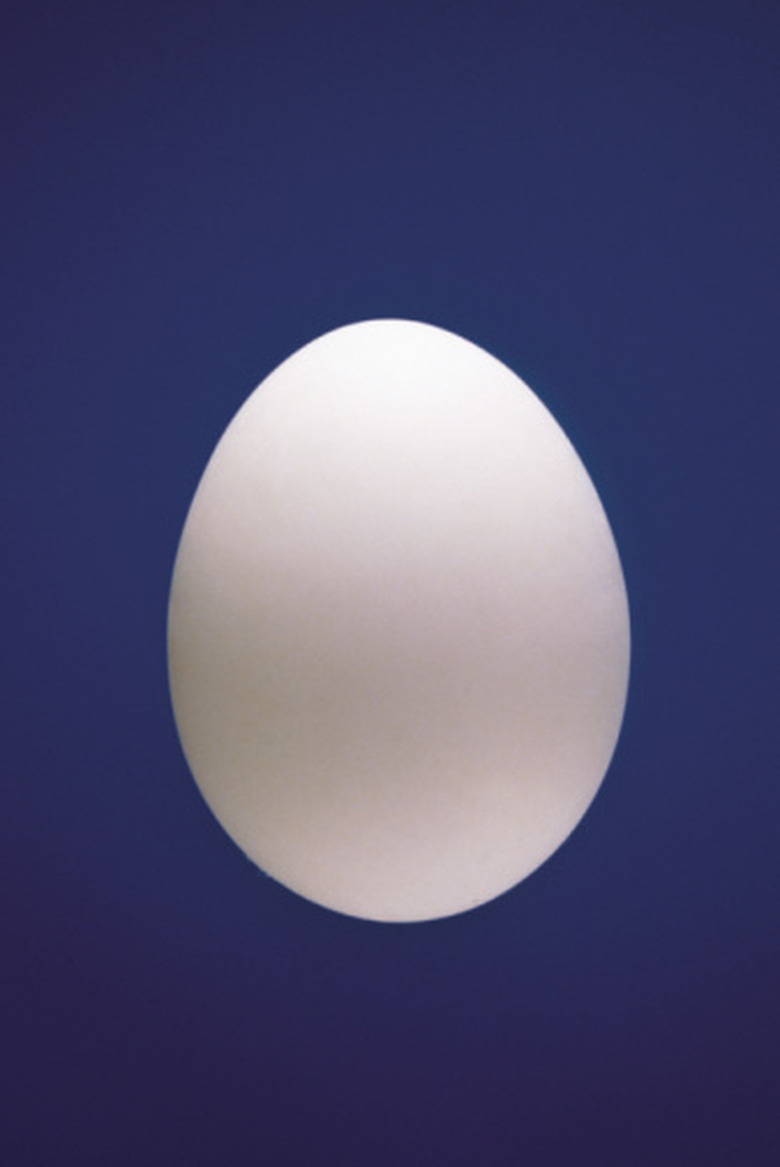How To Keep An Egg Soaking In Vinegar For A Science Project On Getting An Egg In A Bottle
Soaking an egg in vinegar and then sucking it through a bottle is like two experiments in one. By soaking the egg in vinegar, the shell — which is made up of calcium carbonate — gets eaten away, leaving the membrane of the egg intact. Sucking an egg through a bottle is done by changing the atmospheric pressure in the bottle by adding heat. Both experiments can be done with raw or hard-boiled eggs.
Step 1
Place the egg into a bowl filled with white vinegar. Allow the vinegar to cover the egg completely and let it sit, undisturbed, for 24 hours. Drain the vinegar.
Step 2
Soak the egg again in new vinegar for another 24 to 48 hours. You want to end up with an egg that is soft, with no shell left. The membrane of the egg will be intact leaving you with a see-through raw egg or a more rubbery hard-boiled egg. Gently rinse the egg with water and allow it to dry.
Step 3
Take your egg from Step 2 outside to conduct the bottle experiment.
Step 4
Grease the opening of the bottle with a little vegetable oil.
Step 5
Light a piece of paper or other flammable material with a match or lighter and put it into the bottle quickly.
Step 6
Place the egg on top of the bottle and wait for the egg to be sucked through the bottle.
Things Needed
- Bowl
- White vinegar
- Hard boiled or raw eggs
- Glass bottle with opening slightly smaller than the egg
- Vegetable oil
- Paper
- Lighter or match
TL;DR (Too Long; Didn't Read)
If you are using a raw egg, be sure to carefully place the egg onto the bottle and be prepared in case it breaks.
Cite This Article
MLA
Martinez, Christina. "How To Keep An Egg Soaking In Vinegar For A Science Project On Getting An Egg In A Bottle" sciencing.com, https://www.sciencing.com/keep-project-getting-egg-bottle-8592624/. 24 April 2017.
APA
Martinez, Christina. (2017, April 24). How To Keep An Egg Soaking In Vinegar For A Science Project On Getting An Egg In A Bottle. sciencing.com. Retrieved from https://www.sciencing.com/keep-project-getting-egg-bottle-8592624/
Chicago
Martinez, Christina. How To Keep An Egg Soaking In Vinegar For A Science Project On Getting An Egg In A Bottle last modified August 30, 2022. https://www.sciencing.com/keep-project-getting-egg-bottle-8592624/
